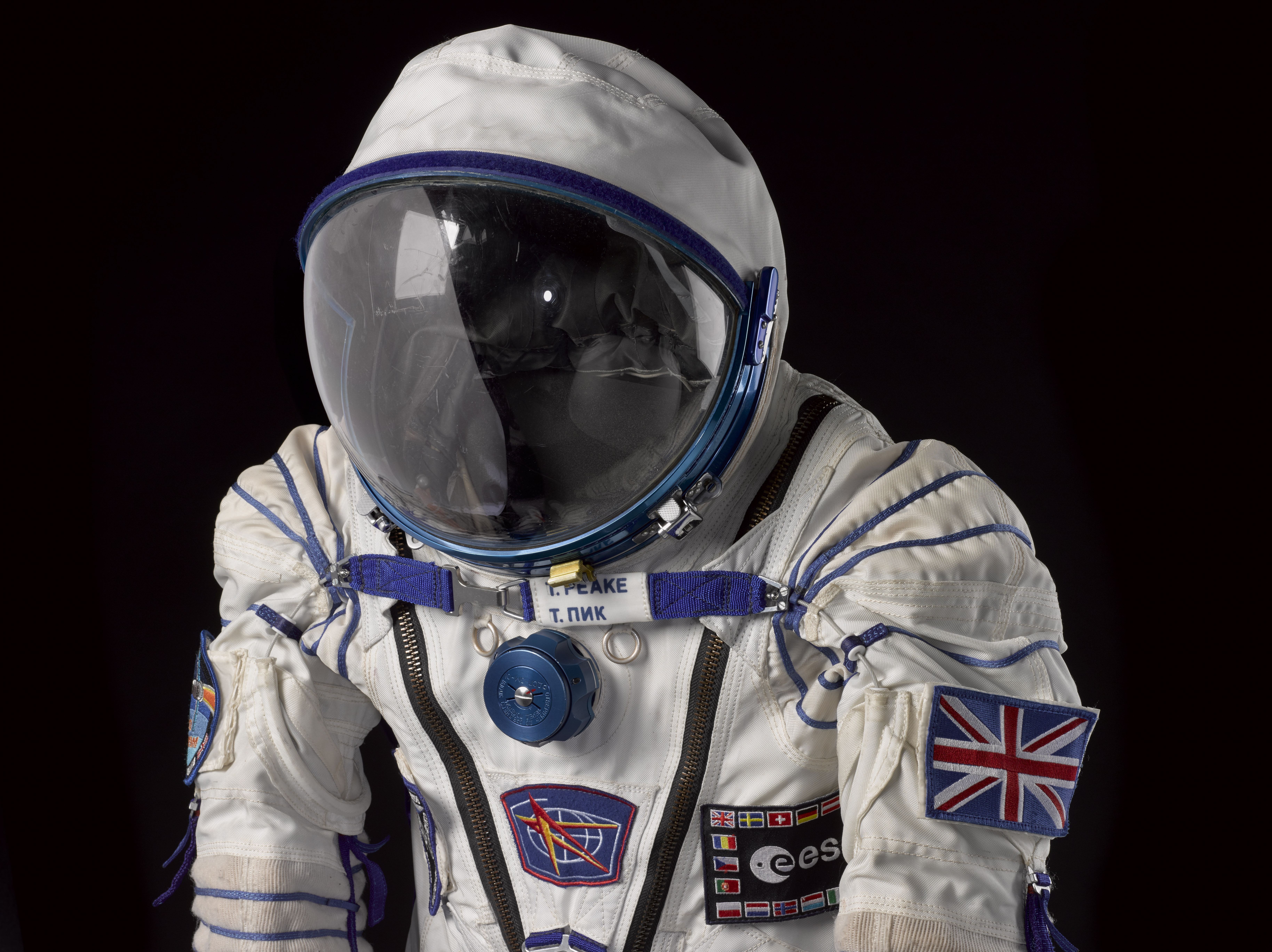Strap in as we share 11 facts about this remarkable space survival system:
1. The Sokol KV-2 emergency suit is worn by cosmonauts (and astronauts) during launches to the International Space Station and the return to Earth.

2. The Sokol suit (Sokol is the Russian word for Falcon) was developed by the RD&PE Zvezda company following the loss of the three-cosmonaut crew of Soyuz 11 in 1971. The crew were not wearing spacesuits when their spacecraft depressurised during its return to Earth.
3. Designed to prevent a repeat of the Soyuz 11 tragedy, the suit was introduced in 1973 to keep cosmonauts alive in the event of accidental depressurisation. The first version was the Sokol-K, The ‘K’ stands for Космос, the Russian word for space.
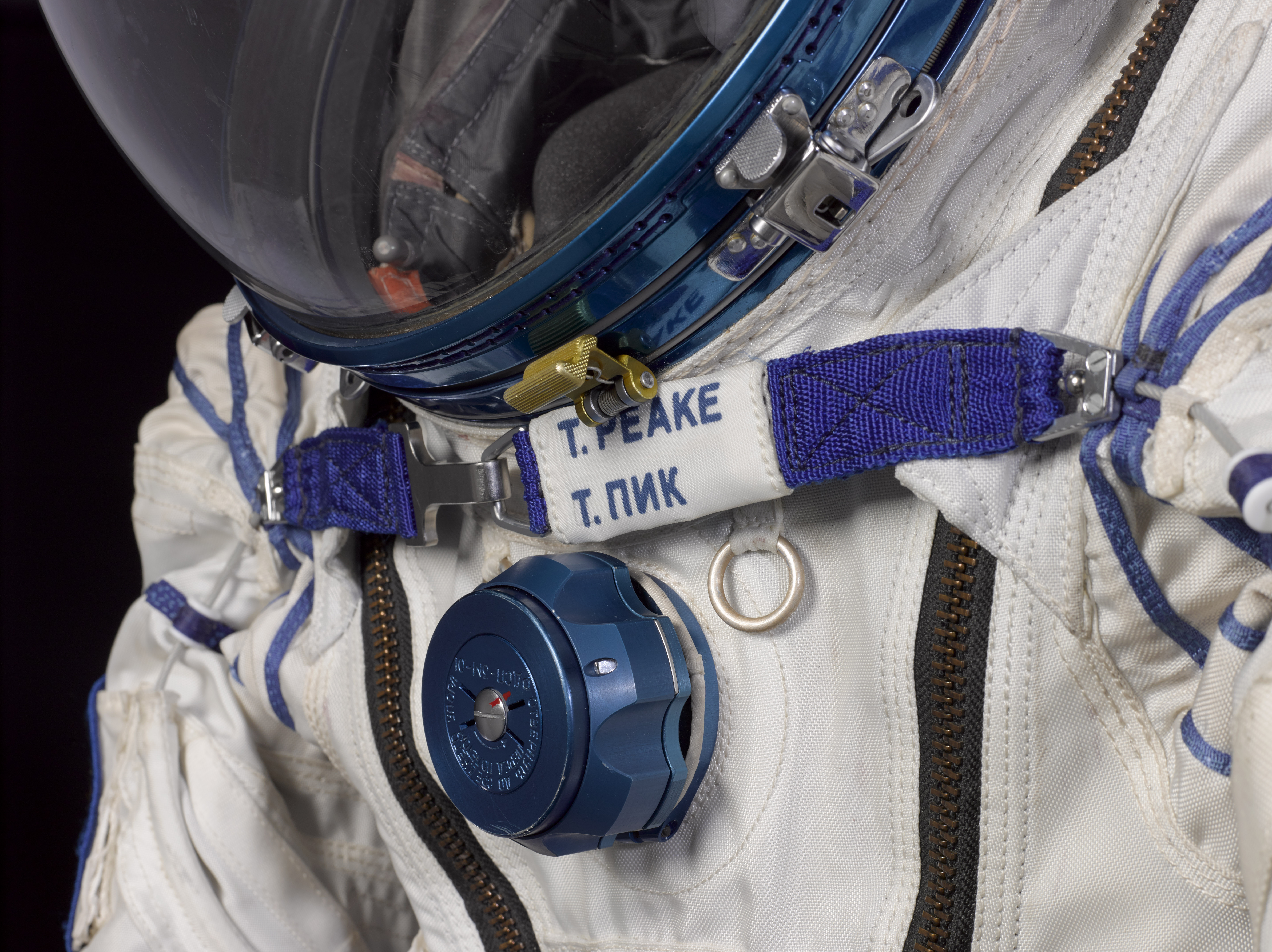
4. Zvezda modified its high-altitude aviation suit to create the Sokol and ready it for spaceflight. Rigid, removable helmets were replaced by softer, built-in ones. This and other adjustments made the Sokol more comfortable and enabled near-instant sealing of the suit when the helmet visor was closed.
5. The suit is made up of a rubberised internal bladder and a rigid external coat. The bladder provides an airtight seal (using an elastic band) and the external coat is made mostly from the temperature-stable insulator Kapton to provide protection from mechanical and thermal impact.
6. Every Soyuz crew member is provided with a made-to-measure suit. It’s vital that it fits properly—each cosmonaut spends an hour in a launch seat with the suit inflated to make sure it fits. Arm, leg and chest straps allow the suit to be adjusted.
7. To get into the Sokol suit, two zips that form a ‘V’ on the chest are opened. Underneath, there is an opening in the internal rubberised bladder known as the appendix. Legs go in first, followed by the arms into the sleeves and head into the helmet.
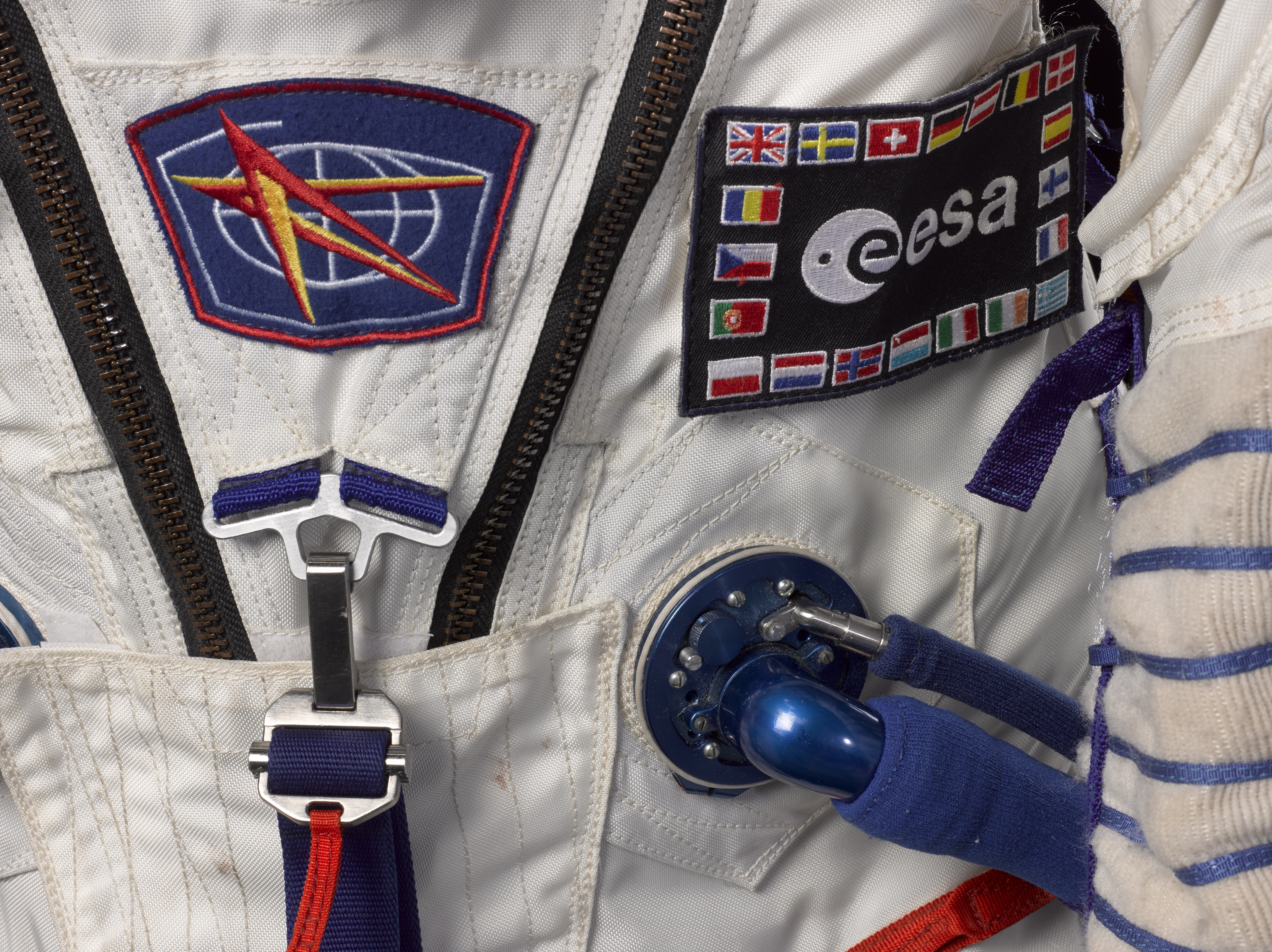
An airtight seal is made by tightly rolling up the appendix and securing it with elastic bands. This is fastened under the V-shaped flap in the suit’s outer layer. The suit’s detachable gloves are secured with anodised aluminium bayonet fixings.
8. The suit’s polycarbonate visor opens on hinges mounted near the ears and seals with an anodised aluminium clavicle flange when closed. The hood or ‘soft helmet’ folds up when the visor is raised.
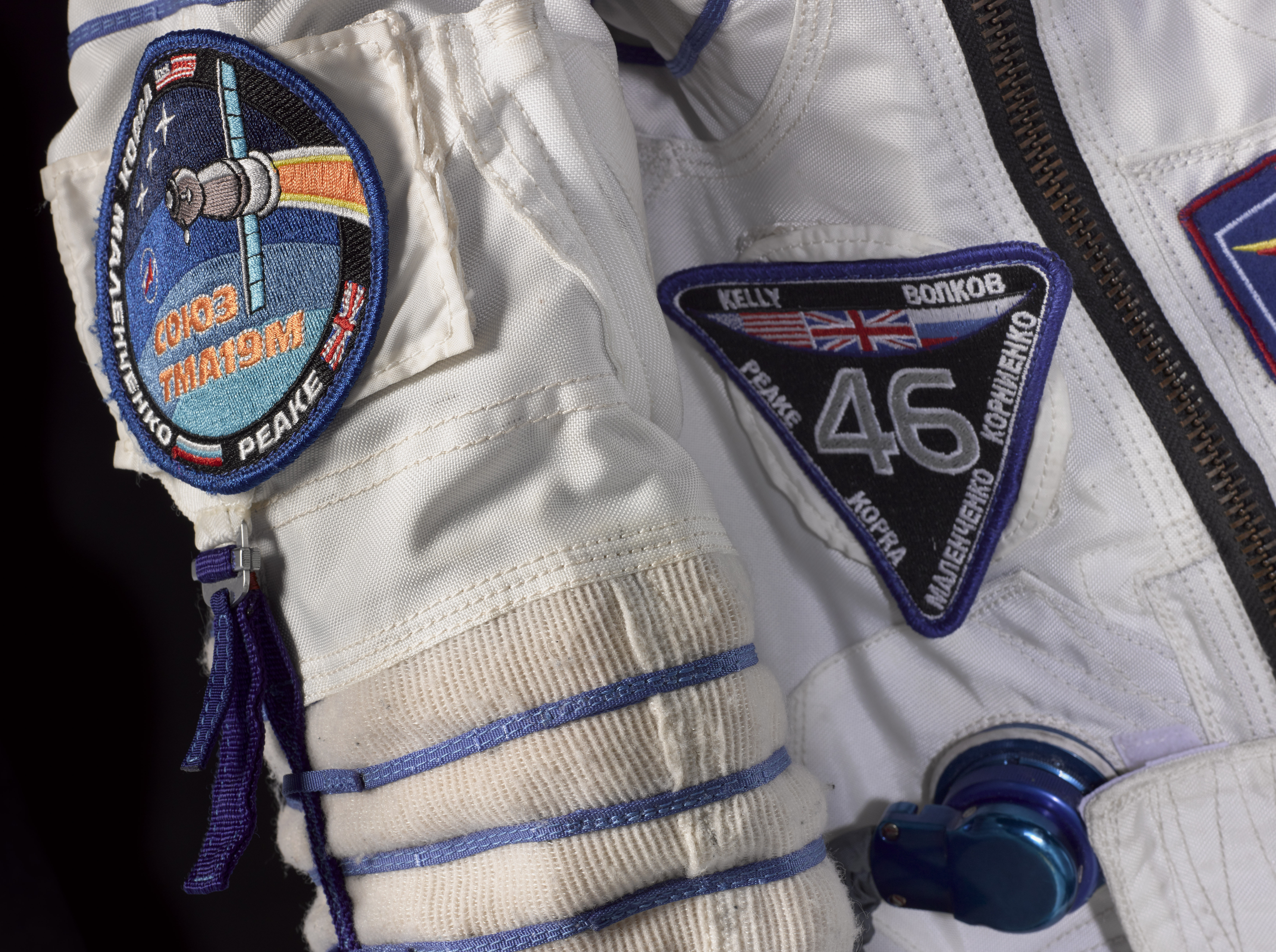
9. Boots are worn only during the walk to the Soyuz spacecraft, to protect the feet of the suit from damage. Cosmonauts often carry children’s toys and gifts in them for luck, then take the boots off to avoid trailing debris into the spacecraft.
10. Once the astronaut/cosmonaut is in the Soyuz spacecraft, electrical and air supply lines and hoses are connected to the lower abdomen section of the suit. Connected to the spacecraft’s life support systems, the Sokol suit provides two hours of oxygen and carbon-dioxide removal if the spacecraft cabin depressurises.
11. The Sokol suit is contoured for the Soyuz spacecraft seats, which require cosmonauts to draw their knees up into a foetal position. This shape causes the ‘cosmonaut stoop’, seen when cosmonauts are walking to the Soyuz spacecraft.
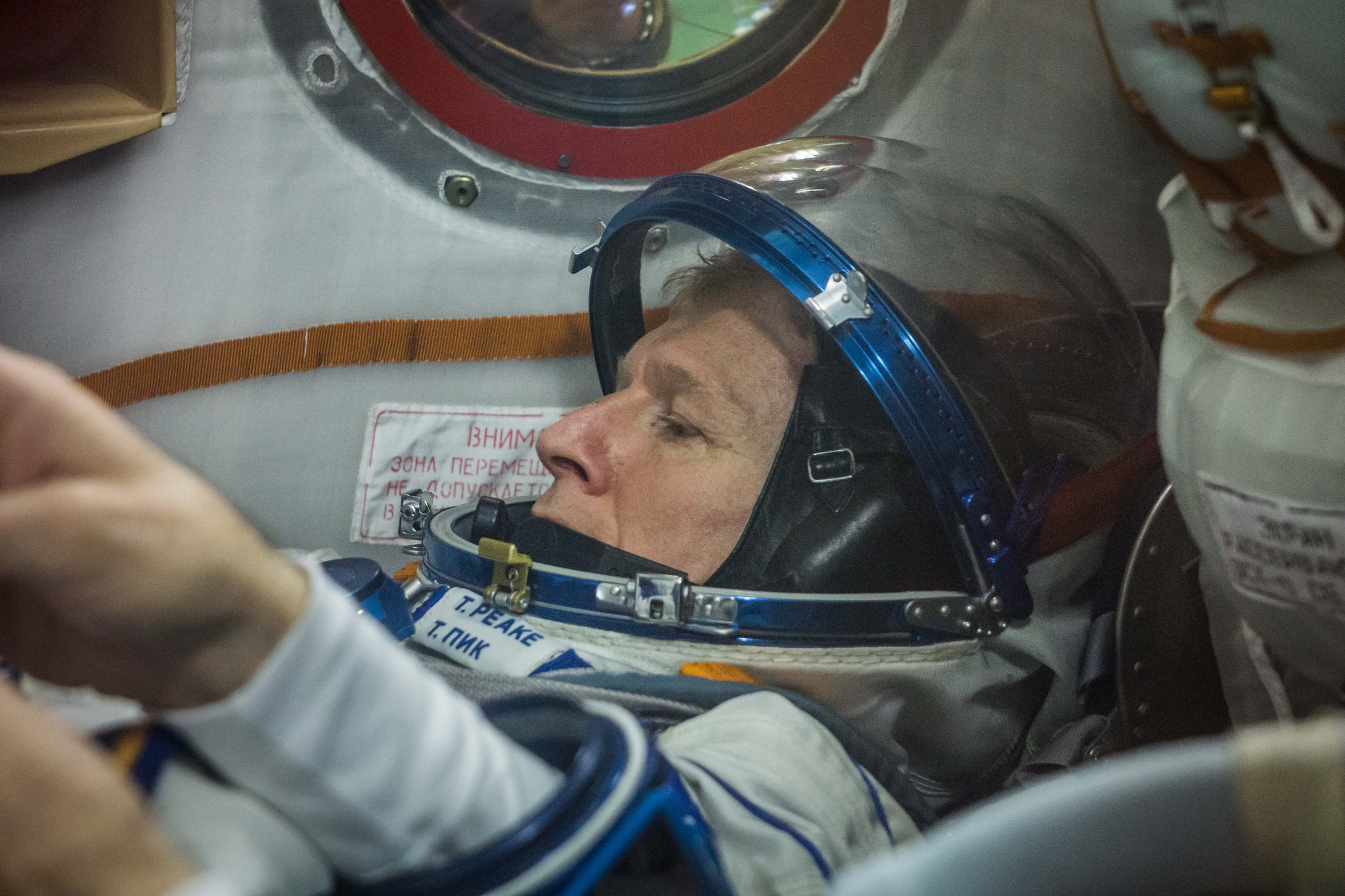
Tim’s Sokol KV-2 emergency spacesuit is now on display at the Museum of Science and Industry in Manchester where it can be seen with the Soyuz spacecraft Tim travelled in as part of The National Tour of Tim Peake’s Spacecraft presented by Samsung and the Science Museum Group.
This is not the first spacesuit to join the Science Museum Group Collection. We also care for Helen Sharman’s Sokol spacesuit (currently on display in the museum’s Exploring Space gallery). Sharman was the first Briton in space and wore her suit while travelling to and from the Russian Mir space station in 1991.
